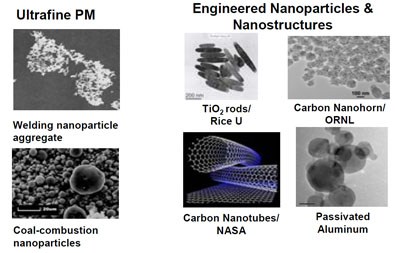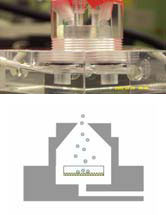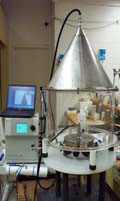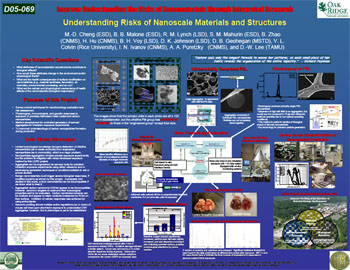Understanding Risks of Nanoscale Materials and Structures

The images show that the primary units in each photo are all ≤ 100nm in size/diameter, but the ultrafine PM group has nothing in common to those in the “engineered group” except their size.
"Nature uses only the longest threads to weave her patterns, so each small piece of her fabric reveals the organization of the entire tapestry."-Richard Feynman
Key Scientific Questions
- What attributes of nanomaterials/ nanostructures contribute to biological effects?
- How would these attributes change in the environment and/or physiological fluids?
- What are the health consequences of surface modification on nanomaterials (e.g., material synthesis, decoration, air chemistry, environmental processing, and so on)?
- What are the cellular and physiological mechanisms of health effects of the nanomaterials (biological responses)?
Focuses of this Project
- Survey current techniques for nanotoxicology evaluation and risk assessment
- Physiological, immunological, and genetic responses to exposure of precisely fabricated metal oxides and carbon nanoparticles
- Method development for controlled generation of aerosol aggregates for inhalation exposure experiments
- To improved understandings of carbon nanoparticles formation during production
 Array of 24 Cell based in-vitro Exposure Units using Air-Cell Interface Device |
 Nose-Only 12-mice Inhalation Apparatus |
Take Home Messages
- Limited toxicological knowledge hampers distinction of ultrafinenanoparticles (as in waste products) from engineered nanoparticles (as in commodity), which is a major problem.
- Nanoparticles aggregation hinders precise exposure experiments, but the problem is mitigated with newly developed exposure method by this LDRD project.
- Aggregates can be engineered via aerosol route for precision inhalation exposure experiments using either ultrasonic and or electrospray generation techniques in conditions suitable to cell or animal studies.
- Benign nanomaterials could trigger severe biological responses, if modified properly as shown by this project. Conversely (not studied in this work), a toxic nanomaterial can be biocompatibleif we know what to treat it.
- Aggregated carbon nanohorns (CNHs) appear to be biocompatible; however, nanohorn singlets do exist and their toxicological properties wait to be evaluated. Carbon nanotubes however can be oxidized and appear to retain oxidants (measured by ROS) on their surface. Inhibition of cellular responses was achieved byusing antioxidants.
- Genomic profiling shows multiple active regulations (up or down)of mouse cell lines upon short-term exposure to undecorated CNH aggregates; however, link to phenotype is yet to be established.
For more information, contact:
Meng-Dawn Cheng (chengmd@ornl.gov, 865-241-5918)


